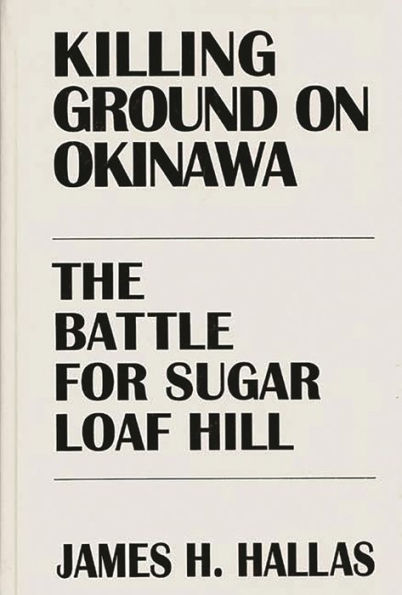Killing Ground on Okinawa: The Battle for Sugar Loaf Hill
On May 12, 1945, the 6th Marine Division was nearing Naha, capital of Okinawa. To the division's front lay a low, loaf-shaped hill. It looked no different from other hills seized with relative ease over the past few days. But this hill, soon to be dubbed, Sugar Loaf, was very different indeed. Part of a complex of three hills, Sugar Loaf formed the western anchor of General Mitsuru Ushijima's Shuri Line, which stretched from coast to coast across the island. Sugar Loaf was critical to the defense of that line, preventing U.S. forces from turbaning the Japanese flank. Over the next week, the Marines made repeated attacks on the hill losing thousands of men to death, wounds, and combat fatigue. Not until May 18 was Sugar Loaf finally seized. Two days later, the Japanese mounted a battalion-sized counterattack in an effort to regain their lost position, but the Marines held.
Ironically, these losses may not have been necessary. General Lemuel Shepherd, Jr., had argued for an amphibious assault to the rear of the Japanese defense line, but his proposal was rejected by U.S. Tenth Army Commander General Simon Bolivar Buckner. That refusal led to a controversy that has continued to this day.
1112076387
Ironically, these losses may not have been necessary. General Lemuel Shepherd, Jr., had argued for an amphibious assault to the rear of the Japanese defense line, but his proposal was rejected by U.S. Tenth Army Commander General Simon Bolivar Buckner. That refusal led to a controversy that has continued to this day.
Killing Ground on Okinawa: The Battle for Sugar Loaf Hill
On May 12, 1945, the 6th Marine Division was nearing Naha, capital of Okinawa. To the division's front lay a low, loaf-shaped hill. It looked no different from other hills seized with relative ease over the past few days. But this hill, soon to be dubbed, Sugar Loaf, was very different indeed. Part of a complex of three hills, Sugar Loaf formed the western anchor of General Mitsuru Ushijima's Shuri Line, which stretched from coast to coast across the island. Sugar Loaf was critical to the defense of that line, preventing U.S. forces from turbaning the Japanese flank. Over the next week, the Marines made repeated attacks on the hill losing thousands of men to death, wounds, and combat fatigue. Not until May 18 was Sugar Loaf finally seized. Two days later, the Japanese mounted a battalion-sized counterattack in an effort to regain their lost position, but the Marines held.
Ironically, these losses may not have been necessary. General Lemuel Shepherd, Jr., had argued for an amphibious assault to the rear of the Japanese defense line, but his proposal was rejected by U.S. Tenth Army Commander General Simon Bolivar Buckner. That refusal led to a controversy that has continued to this day.
Ironically, these losses may not have been necessary. General Lemuel Shepherd, Jr., had argued for an amphibious assault to the rear of the Japanese defense line, but his proposal was rejected by U.S. Tenth Army Commander General Simon Bolivar Buckner. That refusal led to a controversy that has continued to this day.
75.0
In Stock
5
1

Killing Ground on Okinawa: The Battle for Sugar Loaf Hill
272
Killing Ground on Okinawa: The Battle for Sugar Loaf Hill
272
75.0
In Stock

Product Details
| ISBN-13: | 9780275947262 |
|---|---|
| Publisher: | Bloomsbury Academic |
| Publication date: | 03/11/1996 |
| Pages: | 272 |
| Product dimensions: | 6.14(w) x 9.21(h) x 0.62(d) |
| Age Range: | 1 Year |
About the Author
From the B&N Reads Blog
